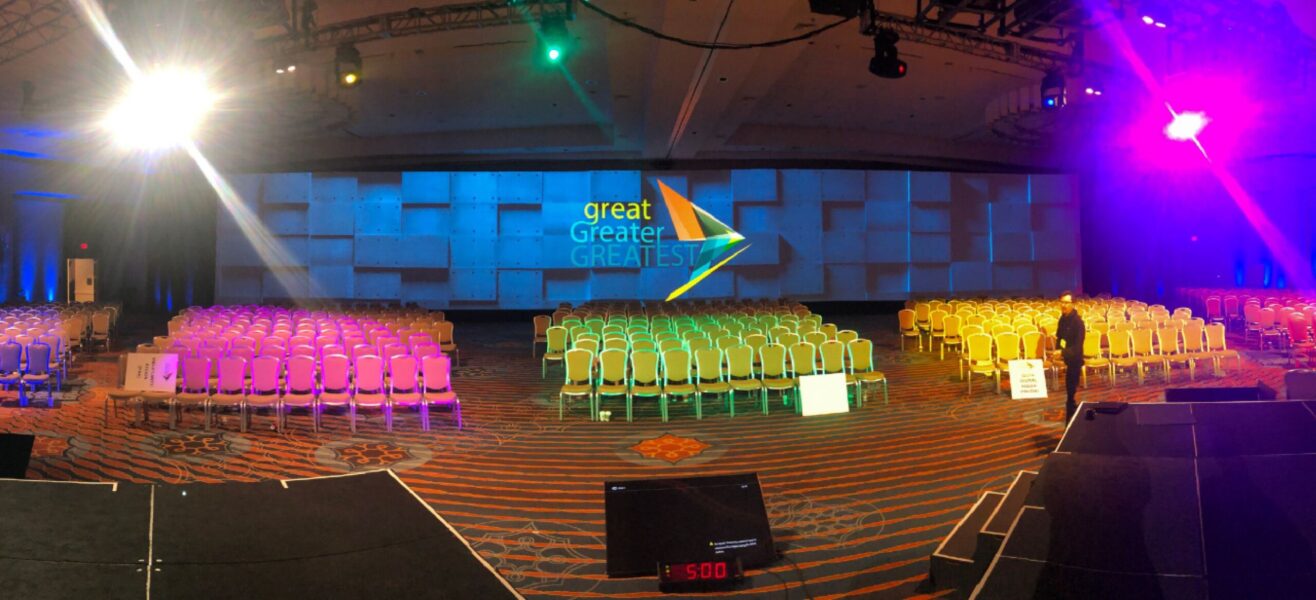Pivot. Hybrid. Innovate.
We’ve said these words a lot over the past several months in the meetings and events industry. At the beginning of the pandemic, we used them with hopeful optimism and positive intent. As time went on, the words themselves have, unfortunately, become overused buzzwords instead of benchmarks.
While the terms may have lost some of their “oomph” lately, the ideals behind them are still important — particularly how we as an industry and a company continue to adapt to and pioneer through uncertainty. Innovation is vital to our survival and success, and it’s time we redefine and reenergize what it means to innovate.
All too often, our field fixates on the next big technological developments and how they will give us competitive advantages in attracting clients and talent and engaging audiences. Artificial intelligence, augmented reality and gamification are amazing advances and certainly make gatherings more dynamic. Yet, to be truly innovative, we can’t neglect or forget the needs of the people for whom we’re creating the meetings and events.
The pandemic has taken a destructive toll on people’s physical and mental health, with depression and anxiety rates skyrocketing, and we must acknowledge many in the audiences we’re producing events for are struggling. As such, our events and gatherings should look and feel different. For instance, let’s give people breaks during all-day, in-person conferences and use technology to allow them to attend breakout rooms via Zoom from their hotel rooms so they have time to decompress. Even better, let’s consider a no-tech option by providing a separate quiet room at in-person events where attendees can go to unwind. By looking beyond technology and focusing instead on the people who are participating in the events, we can continue to innovate our productions, giving audiences what they want and need and meeting them where they’re at.
And speaking of burnout, we as leaders and companies also need to acknowledge that our teams are experiencing it, too, and think creatively about how we help and support them. Employees across industries reported a 21% increase in burnout from December 2020 to July 2021, and those numbers are expected to rise unless companies figure out effective ways to improve employee well-being through better systems and processes. Expecting people to invest their whole lives into their jobs is, frankly, crazy and unsustainable. Rather, we should be investing in them.
At The 180 Group, we’re not only thinking externally when it comes to the human side of innovation; we’re walking the talk internally, too. Innovation is one of our core values, and we strive daily to think outside the box. There are no cookie-cutter production designs nor processes. We’ve recently invested heavily in growing our team and have added several new people and even a new position — an in-house technical director. By investing in this new position, we are reducing stress and saving valuable time for our producers. We are now able to design a client’s vision technically and go to our vendors with everything arranged, and if something goes down mid-show, we have backups in place that automatically trigger, thanks to this new team member.
Investing in people, though, means more than hiring. Providing employees with the right tools, work/life balance and opportunities to grow personally and professionally are equally as beneficial and innovative. When my parents’ generation was young, employees may have preached work/life balance to their colleagues and friends behind closed doors, but they didn’t feel comfortable talking about it with their bosses or managers. What we’ve learned since then is that we have to allow employees to talk openly about what’s stressing them out and what they need. Then, employers need to provide them with creative strategies and solutions to help.
For example, we don’t call ourselves a Leadership Team at The 180 Group; we’re a Coaching Team. We understand “leadership” can be intimidating to some, and we want to be accessible. We want people to ask us questions and feel comfortable talking with us at any time. We often ask our staff, “What do you need, and how can we get it done?” Whether it’s offering them advice or investing in technology, tools, software or personal development, we rarely, if ever, tell our team members “no.” We also encourage them to invest time in themselves every quarter, including taking time off.
Innovation implies some level of risk, but by redefining innovation through a more personal lens, we can mitigate several of the challenges our industry and so many businesses are experiencing today. Technology can still play a vital role, but in order to move the needle, let’s make innovation more human and give the word real meaning once again.


